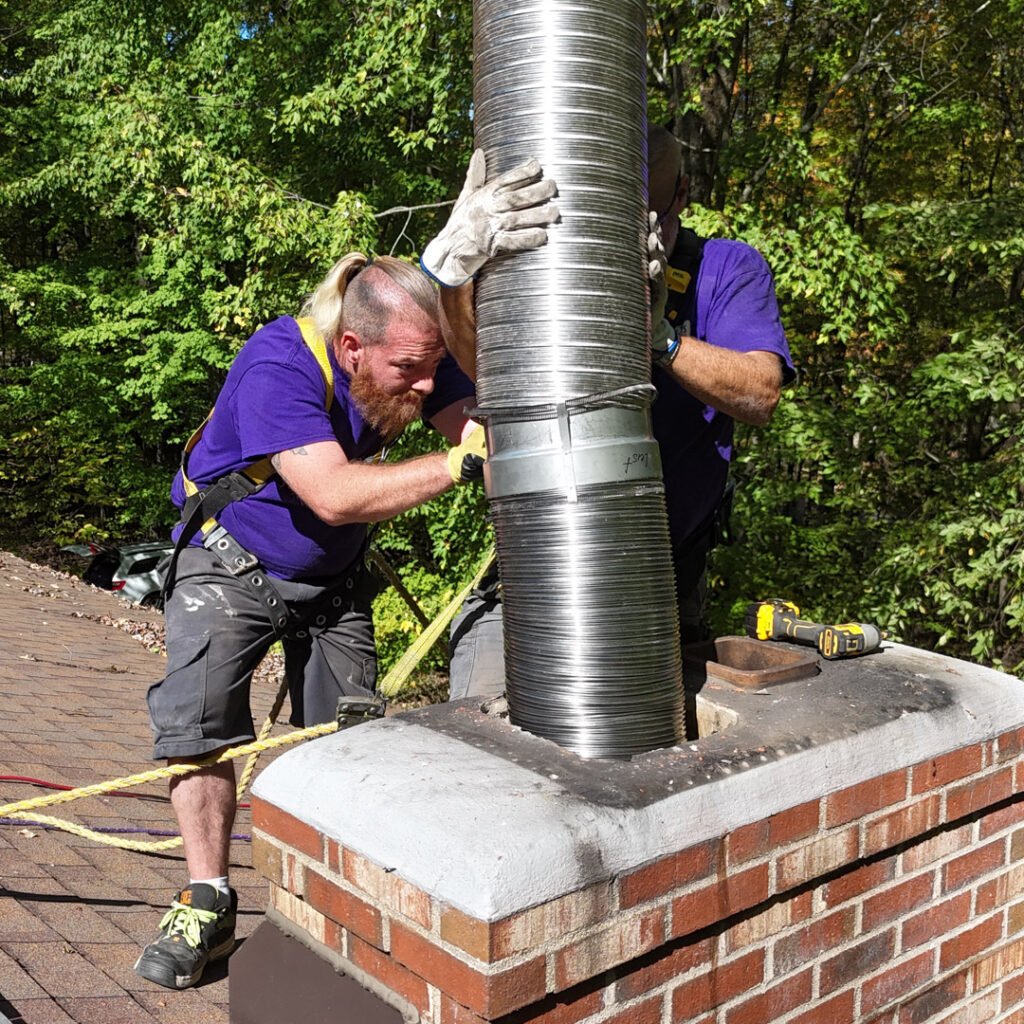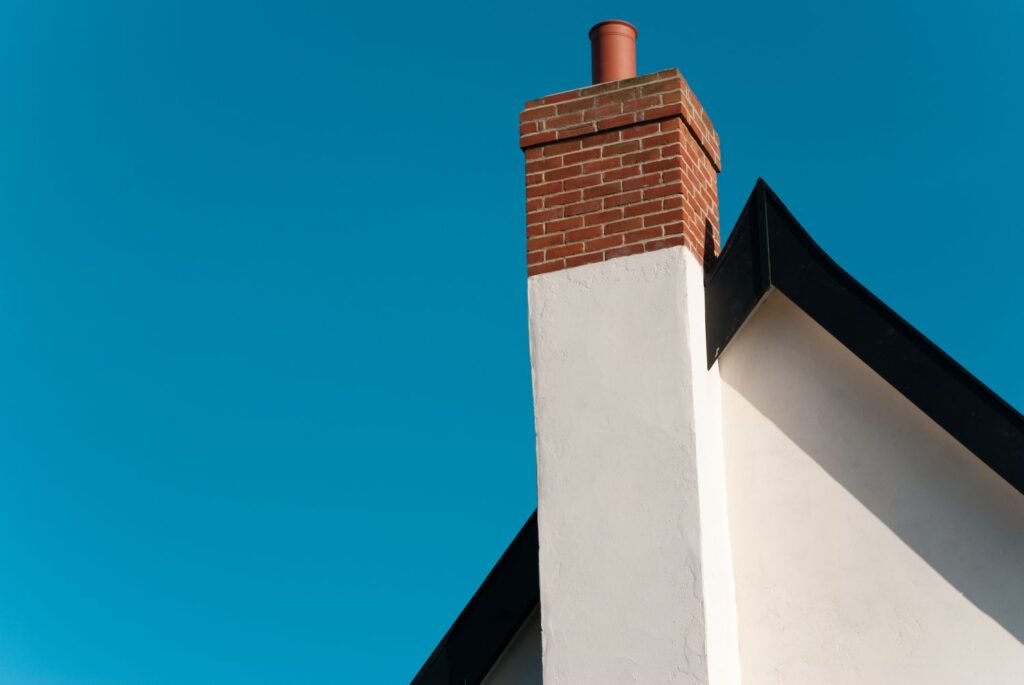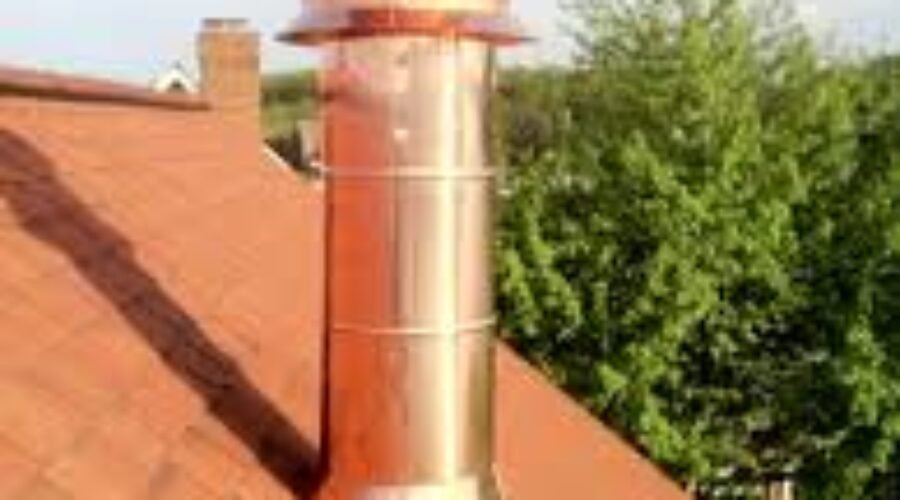Chimney Flue Repair: Signs, Costs, and Maintenance Tips for a Safe and Efficient Home
Key Takeaways
- Proper chimney flue maintenance is essential for home safety, preventing risks like carbon monoxide leaks, fire hazards, and smoke damage.
- Common chimney flue issues include cracks, blockages from creosote or debris, and damaged seals, all of which require timely repairs to ensure safe operation.
- Regular flue inspections and cleanings, ideally on an annual basis, can prevent costly repairs and improve the efficiency of your fireplace or heating system.
- Professional services, such as flue relining, crack repair, or chimney cap replacement, ensure long-term durability and compliance with safety standards.
- Choosing a certified, experienced chimney repair service guarantees effective solutions for issues like smoke passage problems or draft disruptions.
- Proactive maintenance, like installing caps, addressing minor damages early, and avoiding improper fireplace use, helps extend the life of a chimney flue while reducing energy bills.
A well-functioning chimney flue is essential for keeping our homes safe and cozy, especially during colder months. Over time, wear and tear, creosote buildup, or even small cracks can compromise its efficiency and pose serious risks like smoke damage or carbon monoxide leaks. That’s why addressing chimney flue repair promptly is so important.
In this text, we’ll explore why chimney flue maintenance matters, common signs of damage, and what steps we can take to restore its safety and performance. Whether it’s a minor fix or a complete relining, understanding the repair process helps us protect our homes and enjoy peace of mind all year long.

What Is A Chimney Flue?
A chimney flue is the vertical passage inside a chimney that channels smoke, gases, and other byproducts safely out of our home. It plays a crucial role in maintaining proper ventilation for fireplaces, furnaces, or wood stoves.

Purpose And Importance Of A Chimney Flue
The chimney flue ensures smoke and harmful gases like carbon monoxide exit our home instead of lingering indoors. When it’s functioning well, the flue improves air quality and enhances safety.
- Ventilation Support: The flue forms an essential pathway for removing smoke, soot, and gases from burning wood or fuel.
- Proper Draft Flow: Without a working flue, chimney draft issues could disrupt airflow, causing smoke to back into our space.
- Fire Prevention: A clean and undamaged flue reduces creosote buildup, which is a leading cause of chimney fires in the US.
A damaged or blocked flue can compromise safety. Scheduling flue safety inspections as part of regular maintenance helps identify problems early.
Common Problems With Chimney Flues
Several issues can affect the functionality and safety of a chimney flue, making timely attention critical:
- Cracks And Damage: Flue cracks or deterioration expose homes to smoke leaks and fire risks, often requiring cracked flue repair or even flue relining services.
- Blockages: Debris like leaves, twigs, or nests, and creosote accumulation can clog the flue, leading to flue blockage removal and flue cleaning to restore airflow.
- Improper Sealing: Damaged flue seals can let harmful gases seep into our home, affecting air quality and safety.
Regular inspections and repairs, such as smoke passage repair or flue liner restoration, help prolong the life of the flue.
Signs You Need Chimney Flue Repair
Ignoring chimney flue issues can lead to dangerous situations, from harmful fumes leaking into your home to higher energy bills. Watch for these signs indicating it’s time for flue system repair.
Visible Damage Or Cracks
Cracks or gaps in the chimney flue can compromise its ability to channel smoke and toxic gases safely outside. During a flue safety inspection, professionals often find:
- Chips or visible cracks in the flue liner
- Flakes of masonry or tiles accumulating near your fireplace
- White stains (efflorescence) or rust on the chimney exterior
These issues weaken the chimney’s structure and increase fire risks. Neglected cracks can lead to needing extensive cracked flue repair or flue relining services. Schedule regular inspections to catch problems early. The CSIA offers guidelines on safe chimney care.
Smoke Or Fumes Entering Your Home
If you notice smoke backing into your living space, it’s more than just an annoyance—it signals serious flue problems like blockages or broken seals. Common causes include:
- Creosote buildup clogging the smoke passage
- Flue liner damage preventing proper draft flow
- Debris, like birds’ nests or leaves, causing flue blockage
These can lead to carbon monoxide exposure. Call professionals for flue cleaning and flue blockage removal to restore safety. Never ignore these signs as they can escalate quickly.
Poor Heating Efficiency
Poor heating efficiency often points to chimney draft issues or a malfunctioning flue system. If your fireplace or furnace suddenly struggles to heat your home, the problem might be:
- A flue liner in disrepair, affecting airflow
- Gaps or leaks in the flue requiring flue sealing
- Broken chimney components reducing overall function
Upgrading to a repaired or restored flue liner can resolve these inefficiencies. The NFPA provides additional resources for understanding chimney performance and safety.
Don’t wait for minor issues to become costly repairs—with proper inspection and maintenance, a healthy chimney keeps your home warm and safe all season long.
Types Of Chimney Flue Repairs
Maintaining a functional chimney flue ensures safety and efficiency in our homes. Depending on the issue, different types of repairs, such as flue relining, crack patching, or chimney cap replacement, may be required.
Relining The Chimney Flue
Relining restores the flue liner’s integrity when it’s cracked or deteriorating. A damaged flue liner compromises smoke passage, increasing fire and carbon monoxide risks. Flue relining services involve installing a new liner, often made of stainless steel or ceramic, to replace the faulty one.
New liners enhance durability and withstand high temperatures, making them suitable for US homes using wood-burning appliances. Relining also improves draft flow and maintains proper ventilation for fireplaces or stoves. Keep in mind, poor liner conditions often worsen over time; timely intervention saves costs.
Patching Cracks And Gaps
Cracked flue repair focuses on sealing gaps or fissures in the chimney walls, which can weaken its structure and lead to dangerous gas leaks. Cracks typically form due to high heat or aging, causing draft issues.
Experts use specialized materials like high-heat mortar or silicone-based sealants during flue sealing. This repair not only addresses compromised safety but enhances overall performance, preventing issues like smoke entering living spaces.
Avoid delaying crack repairs, as wider gaps might necessitate more extensive flue system repairs. Trained professionals assess the severity and ensure long-lasting results.
Repairing Or Replacing Chimney Caps
Chimney caps shield the flue from debris, animals, and water intrusion. Damaged caps often contribute to blockages, improper sealing, or leaks, which reduce flue safety. Repairs may involve replacing rusted mesh or reattaching loose caps, while replacement ensures restoring full functionality.
Properly sealing chimney caps prevents water damage and extends the life of the flue liner. For areas prone to heavy rainfall or with significant wildlife, durable stainless steel caps are highly effective. Regular inspections catch potential issues with caps before causing more extensive harm.
Benefits Of Hiring A Professional
Professional repairs ensure chimney flue safety and compliance with regulations. Specialists identify hidden problems, such as flue blockage removal needs or underlying draft issues, that may require immediate attention.
Certified inspectors from organizations like the NFPA use advanced tools to deliver accurate diagnoses. They also provide safe solutions, steering clear of risky and ineffective DIY attempts.
Investing in a reputable service for repairs like smoke passage restoration or flue cleaning saves costs long-term. Plus, we enjoy peace of mind knowing our chimney system performs efficiently and safely throughout the season.
How To Choose A Chimney Flue Repair Service
Finding the right chimney flue repair service ensures your system stays safe, efficient, and functional. With a range of repair needs like flue liner restoration or cracked flue repair, hiring a professional with the right expertise is crucial.
Key Factors To Consider
Selecting a reliable service means evaluating their reputation, qualifications, and experience. Here’s what matters most:
- Certifications: Verified professionals, such as those certified by the Chimney Safety Institute of America (CSIA), ensure flue safety inspections and repairs meet industry standards.
- Experience: Look for contractors experienced in services like flue system repair and flue relining. Specialized knowledge ensures long-term effectiveness.
- Insurance Coverage: Verify they carry liability and worker’s compensation insurance to protect our property and avoid unexpected costs.
- Range of Services: Choose companies offering comprehensive solutions, from flue blockage removal to smoke passage repair. Having multiple services under one roof simplifies maintenance.
- Client Reviews: Research customer feedback on platforms like Google or Yelp to confirm a company’s reliability and service quality.
Prioritize companies that use advanced tools for diagnosis, as these can help resolve chimney draft issues and other hidden problems efficiently.
Questions To Ask A Repair Professional
Asking the right questions helps us identify the most competent repair experts. Use these inquiries during consultations:
- “What specific flue cleaning or repair services do you provide?” A clear answer shows aligned expertise, whether it’s flue sealing or flue liner restoration.
- “Are you CSIA-certified or a member of the National Chimney Sweep Guild (NCSG)?” This confirms their adherence to US safety standards.
- “Can you provide references or examples of previous work?” Reputable professionals can share evidence of successful crack repairs or flue relining services.
- “What’s your process for flue safety inspection?” Their response will reflect their thoroughness in detecting blockages, cracks, or other hazards.
- “Do you offer warranties for your repairs?” Warranties show confidence in their work and protect us in case of future issues.
Engaging a knowledgeable service ensures optimal performance and peace of mind.
Cost Of Chimney Flue Repair
Repairing a chimney flue is essential for maintaining home safety, but costs can vary based on several factors. Understanding these details helps us plan and invest in proper maintenance for long-term safety.
Factors Affecting Repair Costs
- Type of Repair Needed: Cracked flue repair or flue relining services typically cost more than minor fixes like flue sealing or clearing blockages. Flue liner restoration, which often involves relining, can range from $2,500 to $7,000 depending on the material.
- Extent of Damage: Minor cracks might cost around $200 to $400, but severe structural issues or flue system repair could exceed $5,000. Repairs to restore smoke passage often require more extensive work and higher budgets.
- Material Costs: The type of flue liner—clay, stainless steel, or ceramic—greatly affects expenses. Stainless steel liners are more durable but can cost $30 to $80 per foot installed, while clay liners are less expensive but might require more maintenance.
- Inspection and Labor Fees: A flue safety inspection generally costs $100 to $300. Add labor at approximately $50 to $150 per hour for professional services. Complex chimney draft issues or flue blockage removal could increase these fees.
Routine care reduces repair frequency. Trusted resources, like the Chimney Safety Institute of America, provide guidance on maintaining flues effectively.
Budgeting And Long-Term Savings
Planning for chimney flue repairs helps save money in the long run. Investing in proactive maintenance, like regular flue cleaning and inspections, limits repair needs. Small issues, when ignored, often grow into expensive problems.
- Prioritize Annual Inspections: Spending $100 to $300 annually prevents costly future damage. Identifying draft issues early can save up to 50% more in repair costs later.
- Choose Durable Materials: A high-quality stainless steel liner lasts 15 to 25 years with minimal maintenance. While pricier upfront, it often saves thousands over time by avoiding frequent repairs.
- Focus On Energy Savings: A well-maintained flue improves heating efficiency, lowering utility bills. Addressing smoke passage repair or damaged flues can cut heating costs by 10% to 20%.
Skimping on safety isn’t worth it, but we can still plan smartly. For more tips, visit the National Fire Protection Association to learn about inspection standards and chimney care essentials.
Maintenance Tips To Prevent Future Repairs
Keeping our chimney flue in top condition helps improve safety, efficiency, and long-term costs. Simple maintenance efforts can make a big difference.
Regular Inspections And Cleaning
Routine inspections and professional cleaning play a major role in preventing expensive repairs. A flue safety inspection should happen at least once a year, especially before the colder months when the fireplace gets more use. Experts can spot cracks, debris buildup, or other hidden dangers during these checks.
Professional flue cleaning removes creosote—a sticky byproduct that builds up inside flues. This substance is highly flammable and one of the leading causes of chimney fires. Also, cleaning eliminates soot and blockages, such as bird nests, ensuring proper smoke passage and preventing carbon monoxide risks.
Here’s how we maintain efficiency with regular cleanings:
- Remove any flue blockages to keep smoke flowing out.
- Identify and address chimney draft issues early to maintain proper performance.
- Check for signs of damage, like missing seals or small gaps, before they worsen.
Importance Of Proper Use And Care
Using the fireplace responsibly minimizes wear and tear on the flue system. Always burn the correct fuel—well-seasoned wood instead of green wood—for cleaner fires and less residue. Avoid using the fireplace as an incinerator; burning trash or improper materials can release harmful byproducts.
Keeping moisture out is crucial. Water damages the flue liner and can cause cracks that lead to costly repairs. If the chimney lacks a cap, consider installing one to block rain and debris and protect the flue system. Damaged caps should be replaced immediately to prevent further issues like leaking or frost damage.
Maintaining proper airflow eliminates several concerns. Open the damper fully during use to prevent smoke backups caused by chimney draft issues. Afterward, securely close it to stop moisture or cold air from entering the flue.
Conclusion
Keeping our chimney flue in top shape isn’t just about avoiding smoke-filled rooms or pesky drafts. It’s about ensuring our homes are safe and cozy through every season. Whether it’s flue liner restoration for damaged liners or flue blockage removal to clear debris, professional attention helps address problems before they escalate into costly repairs.
A cracked flue repair is vital if we notice visible damage since cracks can let harmful gases leak back into our living spaces. Flue cleaning and flue safety inspections also play a critical role. Regular cleanings remove hazardous creosote buildup, while inspections uncover hidden issues like poor sealing or structural weaknesses.
For those experiencing chimney draft issues, flue relining services can be a game-changer. A properly relined flue ensures smooth smoke passage and improves overall system performance. Plus, don’t underestimate the importance of flue sealing—fixing those minor gaps is like putting the last jigsaw piece in place for a safer, more efficient chimney.
Staying ahead is easier with a maintenance routine. Annual inspections and professional cleanings give us peace of mind, while avoiding overloading the fireplace and keeping out moisture prevent unnecessary wear. Resources such as Chimney Safety Institute of America offer additional tips on keeping flue systems in great condition.
If we take steps to prioritize repairs like smoke passage or flue system repair, we can enjoy warm fires and clear air without worry. A well-maintained chimney flue keeps the chill at bay, turning our homes into the cozy retreats we deserve.
Frequently Asked Questions
What Are Signs My Chimney Flue Needs Repair?
Visible cracks, smoke entering the home, and poor heating efficiency often signal flue troubles. Cracks weaken the structure and can lead to smoke leaks. Smoke backing up indicates blockages or draft issues, while reduced heating performance points to malfunctioning components.
How Often Should I Schedule A Flue Safety Inspection?
Annual inspections are recommended, preferably before winter. These checkups uncover hidden damage, creosote buildup, or airflow issues. Inspections by certified professionals, like those from the CSIA, ensure thorough evaluations.
Can Damaged Flue Liners Be Restored?
Yes, flue liner restoration is possible and often essential for safe smoke passage. Specialists can reline the flue to seal cracks or replace liners for severe damage. Flue relining services improve draft performance and prevent gas leaks.
What Causes Chimney Draft Issues?
Blockages, incorrect liner sizes, or damaged seals disrupt airflow. External factors like high winds or low chimney height can also create draft problems. Professionals resolve these through flue blockage removal, sealing repairs, or adjustments to the system’s design.
How Can I Avoid Future Repairs?
Regular flue cleaning removes creosote and debris, reducing fire risks. Keeping moisture out with caps and scheduling preventive maintenance stops wear and tear. Trusted resources like the NFPA provide guidelines for safe chimney use.
Why Is DIY Repair Not Advisable?
Fixing flues requires specialized skills, tools, and certifications to ensure safety. Inaccurate repairs might increase risks like carbon monoxide leaks or fires. Clearing blockages, sealing gaps, and conducting flue system repair always demand qualified professionals.
Are Flue Repairs Expensive?
Costs vary based on damage. Cracked flue repair may cost $250–$300, while flue relining services can range from $1,000–$7,000 depending on material and chimney size. Investing in regular maintenance reduces major expenses over time.


